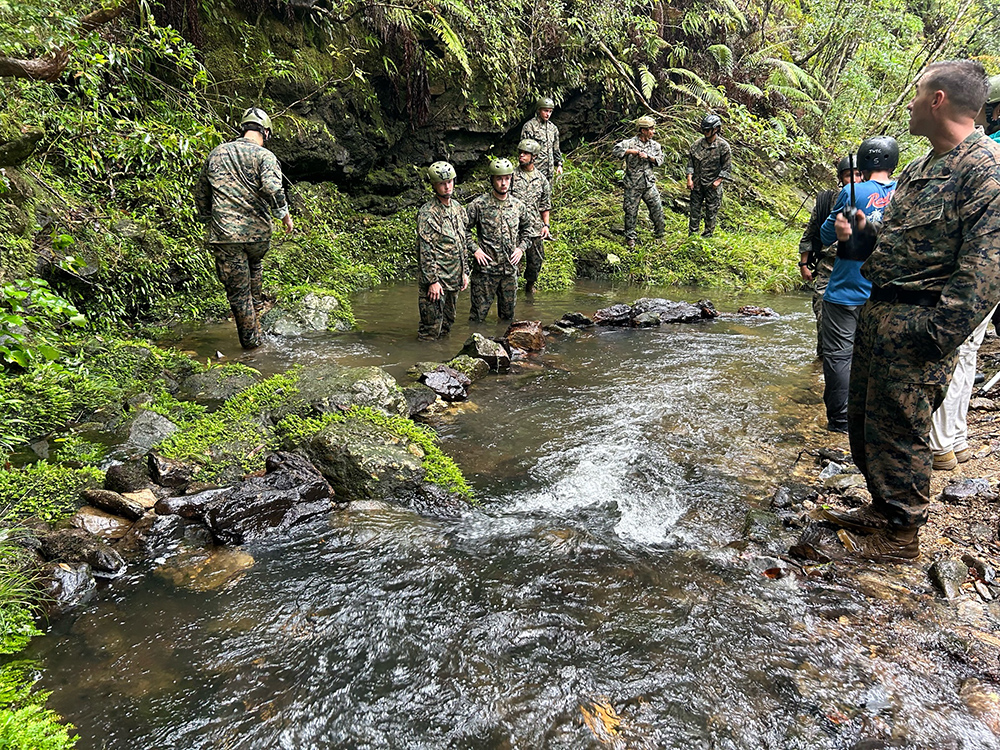
Deploying Renewable Generation Through Small-Scale Hydropower
By Aaron Petri, Ph.D., Samantha Mabry, and Saif Malik
A field demonstration and ongoing investigation of modular hydrokinetic turbines by the U.S. Army Engineer Research & Development Center’s Construction Engineering Research Laboratory illustrates the potential applicability for using the technology on military deployments.
Modernization across the U.S. military affords numerous advantages, but this progress is not without its share of newfound considerations to address.
As technological advancement increases, equipment becomes more powerful and, consequently, more dependent on fuel resupply chains. Since World War II, U.S. Army operational energy consumption has increased by nearly 2,000 percent per soldier. The number of radios used by U.S. Marine Corps battalions has increased by 250 percent.
Infantries observe the effects of technological advancement largely in the form of heavier packs. In terrain that is inaccessible to vehicles, each soldier may carry up to 30-lb of batteries in addition to other essential and mission-specific items; this will eventually lead to weakened focus, endurance, and morale during long-term deployments. The Marine Corps is very interested in a solution that aids in breaking the chain of reliance on fossil fuels.

Initiatives to reduce the military’s tether to fuel are well-grounded catalysts in the evolving way that U.S. defense is powered. Current multi-domain operation scenarios identify the inherent vulnerabilities of fuel re-supply chains as a critical target that adversaries will seek to disrupt using asymmetric means. In contested environments, the dependence on diesel generators for electricity raises concerns for the resilience and autonomy of deployed forces.
Innovative strategies to scavenge power in the field are being explored by the Department of Defense to supplement current power supply methods. Utilizing resources that are readily available downrange can prevent exposure to highly targeted fuel supply chains while reducing cost, improving resilience, and impactfully contributing to the global push toward renewable energy. Small-scale hydropower is a promising example being studied.
Modular Solution
Diesel generators are commonly used for backup power, but tend to be unreliable in extreme weather. Diversifying fuel supplies improves resilience when a source fails—and should be a consideration when planning permanent power grids and temporary deployments.
Hydropower is an underrepresented technology in many contexts. However, besides its impracticality to locations where there is no water or limited space, hydropower is cost-prohibitive to install. And, while it often requires significant river modification and infrastructure and is not portable or rapidly deployable, feasibility assessments of modular hydrokinetic turbines (HKTs) being conducted by U.S. Army Engineer Research & Development Center’s Construction Engineering Research Laboratory (ERDC-CERL) found that the covert, rugged generation potential of these machines can impactfully fill the need for green energy in military operations, particularly in jungle deployments.
Employing modular HKTs offers a rugged, scalable device that generates power by the natural kinetic energy of flowing water, supplementing the quantity of batteries required to power a deployed platoon. While still an underdeveloped technology, HKTs may be a viable solution to extend the tether of fuel. This can be particularly beneficial in riverine jungle environments that are inaccessible to vehicle transport and often too shady for solar-generating systems.
The small-scale hydropower industry is, in part, concerned with providing backup power to rural riverine communities that lack reliable access to grid power. In these cases, there are few limitations to size, weight, and technical complexity. Developers on the other hand are more concerned with consistently maximizing output while minimizing the side effects that large conventional hydropower is infamous for.
Defined Characteristics
Hydrokinetic microgrids have successfully delivered power to small riverine communities in Alaska. Designing a suitable technology for the Marine Corps, however, requires overcoming a host of new challenges and forming an entirely new way of thinking about what a modular hydrokinetic system looks like.
Research and development are ongoing. Overarching goals include resolving weakness related to efficiency and agnostic applicability, balancing exceptionally low weight with maximal power output, and optimally suiting to unique operational needs.
A field demonstration conducted in May 2024 in Okinawa, Japan, by ERDC-CERL with the Naval Facilities Expeditionary Warfare Center and University of Washington Applied Physics Laboratory employed both in-house and commercial off-the-shelf devices to characterize the applicability of current prototypes to the military under the limitations of a potential operational environment. Involving the perspectives of federal researchers and academia, active military personnel, and industry developers served to broaden the scope of the endeavor to maximize the technology’s applicability for numerous contexts.
Through communications with the Marine Corps, several military-specific targets were identified that must be met prior to a new technology’s employment in an operational setting.
- Production Output: The technology must consistently produce 40-W output to fully charge a BB-2590 battery within 6-hrs.
- Low weight: The technology must weigh no more than 35-lb. The objective is no more than 10-lb per soldier, potentially involving several components divided among soldiers and secured together upon deployment.
- Low Profile Design: Enhance stealth capabilities of the technology when deployed in water as well as easing transportation from site to site, ideally fitting inside or at the base of a pack.
- Rapid Deployment: The technology must go from pack to power in 10-min or less.
- Site Agnostic: Provide a design that suits a range of flow velocities, water depths, channel widths, and water conditions with little to no site modification required.
- Simplistic: There can be no technical training required to operate and maintain the device.
- Life-Cycle Cost: The technology must have lower construction and maintenance costs over the life of the device compared to modular solar panels and fossil fuels.
This set of targets is specific to the unique needs of the intended military warfighter. The feedback obtained from Marine Corps personnel is critical in the early stages of warfighter innovation in order to design a suitable solution that accounts for resource availability, in-field maintenance and setup requirements, efficiency, durability, and practicality.
Tactical Advantages
The researchers for the microgrid compared the performance results obtained through flume testing with those taken in the operational environment. These metrics were used in tandem with the perspectives of assessors to determine whether the technology meets the criteria for success. While laboratory testing is an integral step to developing new technologies, the first round of field evaluation revealed how prototypes are likely to flourish to a degree that is not feasible in the uncontrolled operational environment. Increased turbulence under comparable flow velocity presented unforeseen challenges, for instance.

The developmental research to date highlights a lack of standardization in the testing and evaluation of commercial HKTs. This is a limiting factor in its appeal to military and civilian customers, as quality cannot be assured. At the same time, a lack of standardized procedures being employed by HKT developers means progress in the small-hydropower sector will continue at the current slow pace.
The specific quantitative benchmark targets collected in the research will support the determination of a unified procedure for testing and evaluating modular HKTs. This effort seeks to resolve differences in quality and performance throughout the sector to promote advancement and streamline future development.
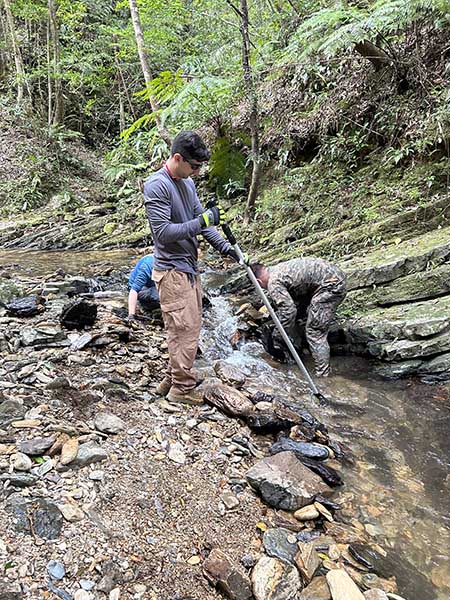
Proactive Considerations
The ERDC-CERL team continues working toward development of a device that is suitable for utilization by a Marine or soldier. That said, it would be amiss to acknowledge the call for alternative and renewable energy without addressing the negative consequences that conventional hydropower currently plays on natural ecosystems. As innovation in small-scale solutions seeks to minimize these unintentional environmental effects, the impact of modular HKTs on wildlife, water quality, and stream bathymetry will be studied and mitigated. To determine the likelihood of blade strike on fish, researchers are developing an artificial intelligence software that detects the presence of fish and enables activity monitoring around the HKT device. Similarly, the effect of blade rotation on turbulence downstream will be studied using acoustic Doppler velocimetry.
Further, work is underway to develop a web-based application to help match HKTs to stream locations and improve understanding of when and where the devices are most likely to perform. This software could be used during mission planning to proactively identify suitable sites that meet the stream parameters necessary for efficient power generation.
Standardizing not only the testing procedure and evaluation criteria of HKTs but the way that deployment sites are selected will ensure a universally useful technology ultimately emerges while also overcoming the weaknesses and environmental consequences of alternative generation technologies.
Aaron Petri, Ph.D., is Researcher, Samantha Mabry is Technical Writer, and Saif Malik is Research Physicist, Construction Engineering Research Laboratory - U.S. Army Engineer Research & Development Center. They can be reached at aaron.c.petri@usace.army.mil; samantha.g.mabry@usace.army.mil; and saif.a.malik@usace.army.mil.

Published in the March-April 2025 issue of The Military Engineer

Check Out Related Articles From TME
-
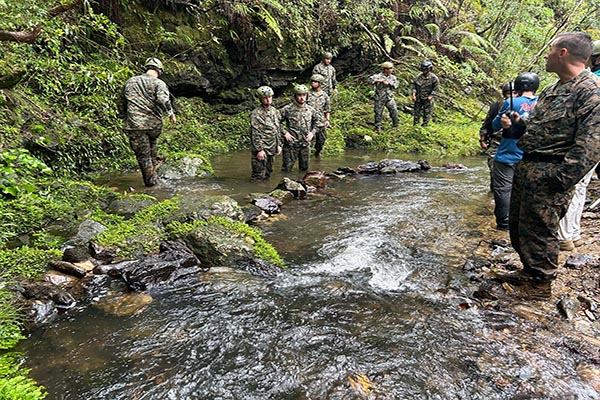
Deploying Renewable Generation Through Small-Scale Hydropower
A field demonstration and ongoing investigation of modular hydrokinetic turbines by the U.S. Army Engineer Research & Development Center’s Construction Engineering Research Laboratory illustrates the potential applicability for using the technology on military deployments. -
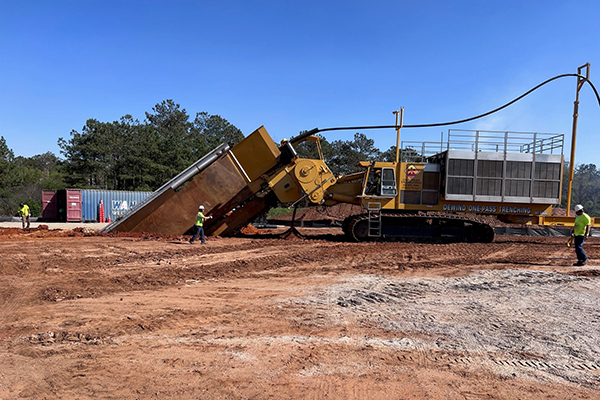
Rethinking Traditional Treatment Systems for PFAS Remediation
At two U.S. Air Force bases impacted by historical releases of aqueous film-forming foam, innovative methods in treating PFAS in both surface water and groundwater provide examples of success in safeguarding health for military personnel and nearby communities. -
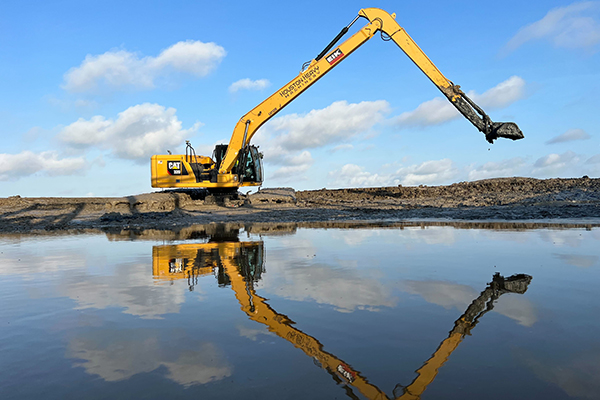
Tackling Restoration Projects With Amphibious Excavators
When faced with soft and wet underfoot conditions, such as at a recent channel dewatering, excavation, and repair project for USACE Galveston District, amphibious excavators offer a scalable way to contour difficult site characteristics. -

Big Job, Small Solutions: Completing a Complex Remediation in Remote Alaska
At a remote federal remediation site in south-central Alaska, inaccessible by road, barge, or large planes, leveraging the local community and a fleet of snowmobiles and small watercraft allowed for 1,100 bags of contaminated soil to be transported for offsite disposal. -
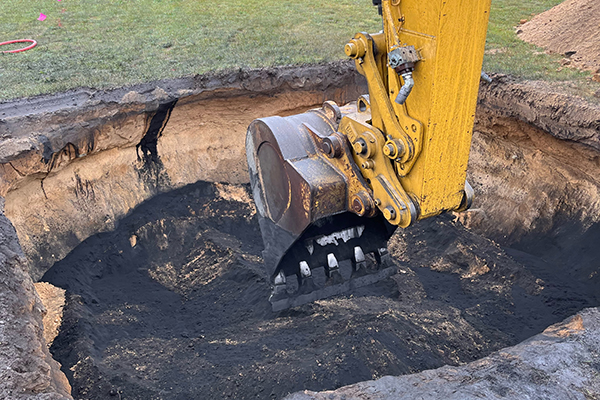
Regenesis Offers Full-Spectrum PFAS Remediation
For project stakeholders and remediation managers confronted with PFAS, Regenesis demonstrates why in situ treatment using Regenesis’ PlumeStop® colloidal activated carbon (CAC) is a game changer. -
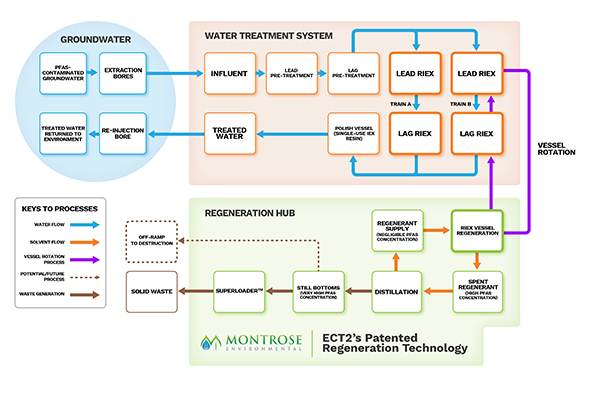
100 Percent PFAS Compliance with Regenerable Ion Exchange Resin
The operational success of a RIEX system spotlights its successful approach to combating PFAS in an effective and economical manner. (Sponsored Content)
